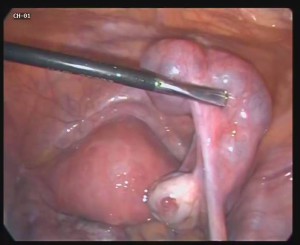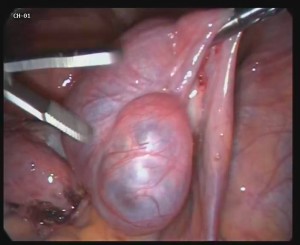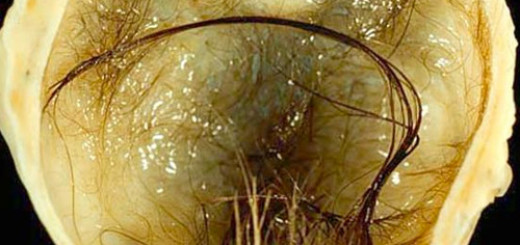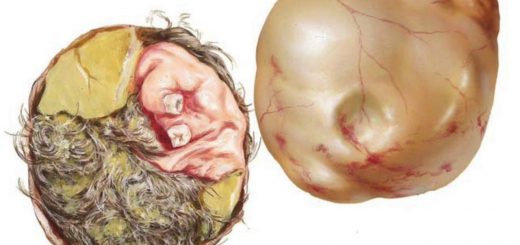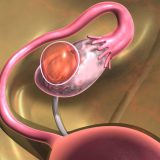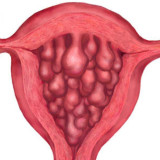Despite the fact that a hydrosalpinx is not an ovarian cyst, the information here is for a reason. The phenomenon is often mistaken with ovarian cyst case. Sometimes the correct diagnosis happens to become clear only during a surgery.
The hydrosalpinx is accumulation of fluid in fallopian tube (gr. hydro — water, salpinx — fallopian tube).
Why does the fluid begin to accumulate in a fallopian tube and becomes a health hazard? It all due to the chronic inflammation. As the tube is closed on one side (the side of the abdominal cavity) it becomes a “bag of fluid”, which communicates only with the uterus.
Another consequence of inflammation is the increased production of fluid in the lumen of this tube. But since the main exit is closed this fluid begins to accumulate inside the tube. Small amounts of inflammatory fluid can be released through the remaining hole in the uterus area.
Symptoms of hydrosalpinx
Hydrosalpinx doesn’t have any specific signs and is usually found during the ultrasound examination. But there are some general manifestations of ill-health that can be noticed.
Many patients note periodic abdominal pain. It appears with exacerbation of inflammation in the tubes. The pain is usually dull, not very intense, often appear after a cold or a stressful situation.
Some women report prolonged unusual spotting or watery discharge from vagina after menstruation. The reason for this is that menstrual blood goes into the cavity of hydrosalpinx, and then there is a slow outflow of the fluid through the uterus.
Because the disease is a sort of chronic infection, it often gives typical for inflammation symptoms: general weakness, fatigue, sweating, small temperature rise.
In young patients, the main manifestation of the disease is infertility. A fallopian tube closes when hydrosalpinx is forming. Thus, the tube becomes impassable. Moreover, the process is bilateral completely shutting down fallopian tubes. Even technology such as IVF, is ineffective. The fluid that accumulates in the hydrosalpinx makes all the matter.
Besides, this inflammatory fluid is very toxic to young embryos. And when replanting in the uterus, the embryos die from it at an early date. In the presence of the disease effectiveness of IVF decreases from 30% to 10%. IVF is recommended to perform only after surgical treatment of the illness.
Treatment of hydrosalpinx
There are situations when antibiotics or physiotherapy are assigned for anti-inflammatory conservative hydrosalpinx treatment. But in practice it is ineffective and gives temporary effect. With the conservative treatment the amount of produced fluid in the fallopian tube simply decreases. Hydrosalpinx contracts and becomes invisible on ultrasound examination. As you can guess it is a pseudo cure that does not solve the problem.
Surgery is the main method of hydrosalpinx treatment. Extension of the area for surgery depends on the damage on fallopian tubes. Having estimated the condition during the operation, the surgeon must decide whether to restore the tube patency or delete the tissues.
